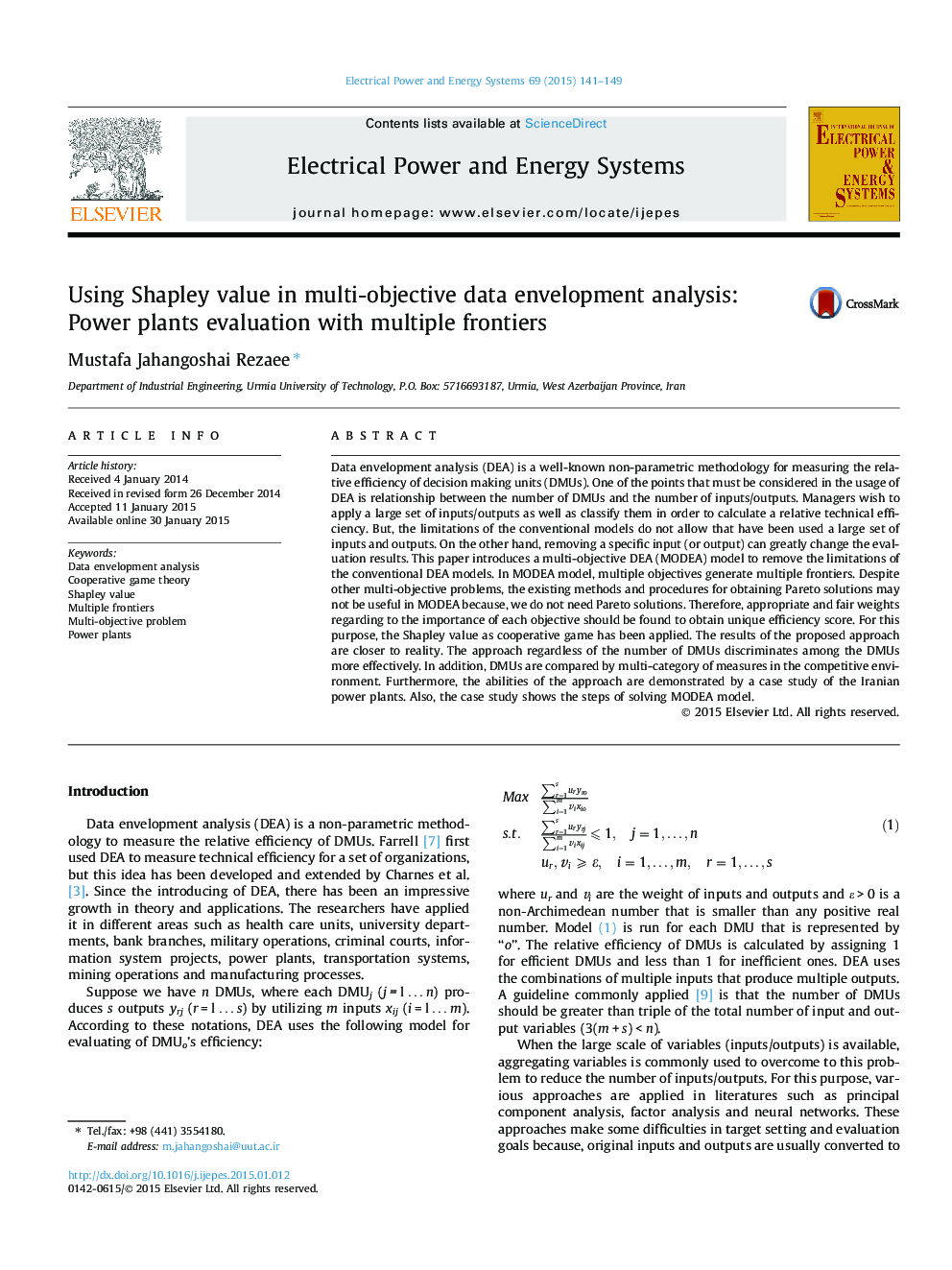| کد مقاله | کد نشریه | سال انتشار | مقاله انگلیسی | نسخه تمام متن |
|---|---|---|---|---|
| 399520 | 1438731 | 2015 | 9 صفحه PDF | دانلود رایگان |
• Introducing multi-objective data envelopment analysis.
• A new approach for solving multi objective problems.
• Combining of game theory and data envelopment analysis.
• Evaluation of DMUs with different measures in competitive structure.
• Discriminates among the DMUs more effectively with large scale inputs/outputs.
Data envelopment analysis (DEA) is a well-known non-parametric methodology for measuring the relative efficiency of decision making units (DMUs). One of the points that must be considered in the usage of DEA is relationship between the number of DMUs and the number of inputs/outputs. Managers wish to apply a large set of inputs/outputs as well as classify them in order to calculate a relative technical efficiency. But, the limitations of the conventional models do not allow that have been used a large set of inputs and outputs. On the other hand, removing a specific input (or output) can greatly change the evaluation results. This paper introduces a multi-objective DEA (MODEA) model to remove the limitations of the conventional DEA models. In MODEA model, multiple objectives generate multiple frontiers. Despite other multi-objective problems, the existing methods and procedures for obtaining Pareto solutions may not be useful in MODEA because, we do not need Pareto solutions. Therefore, appropriate and fair weights regarding to the importance of each objective should be found to obtain unique efficiency score. For this purpose, the Shapley value as cooperative game has been applied. The results of the proposed approach are closer to reality. The approach regardless of the number of DMUs discriminates among the DMUs more effectively. In addition, DMUs are compared by multi-category of measures in the competitive environment. Furthermore, the abilities of the approach are demonstrated by a case study of the Iranian power plants. Also, the case study shows the steps of solving MODEA model.
Journal: International Journal of Electrical Power & Energy Systems - Volume 69, July 2015, Pages 141–149
